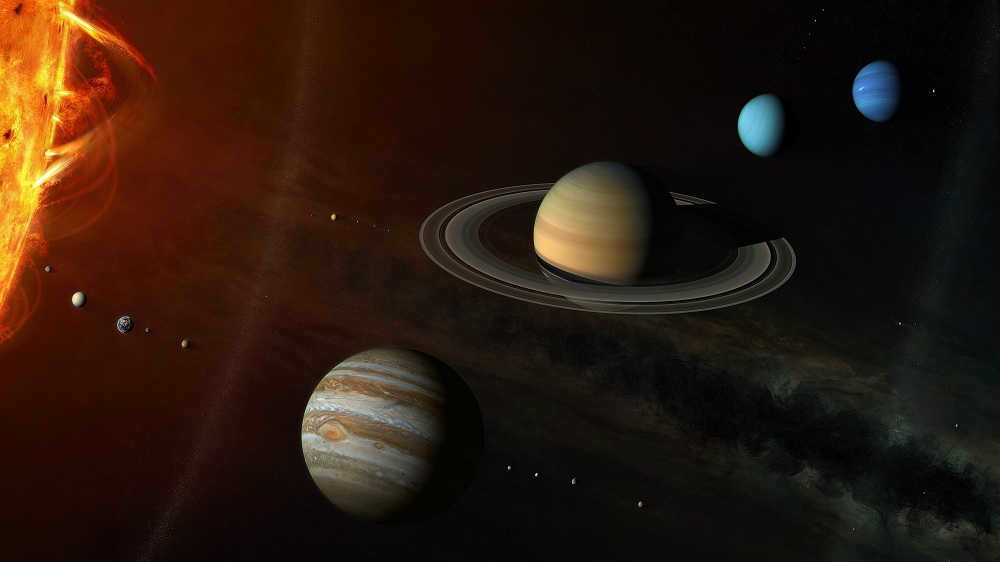
The size of our solar system is a topic that may appear straight-forward, however, there exists no universally acknowledged criterion for determining the boundaries of our solar system.
There are three prospective definitions for the outer limits of our solar system: the heliopause, the periphery of the Oort Cloud, and the gravitational sphere of influence of the Sun. What are the dimensions of our solar system in accordance with each of these definitions?
Heliopause
The heliopause is the boundary of our solar system where the solar wind generated by the Sun transitions to the radiation originating from interstellar space.
At the heliopause, the intensity of radiation from outside the solar system surpasses that of the radiation within the solar system.
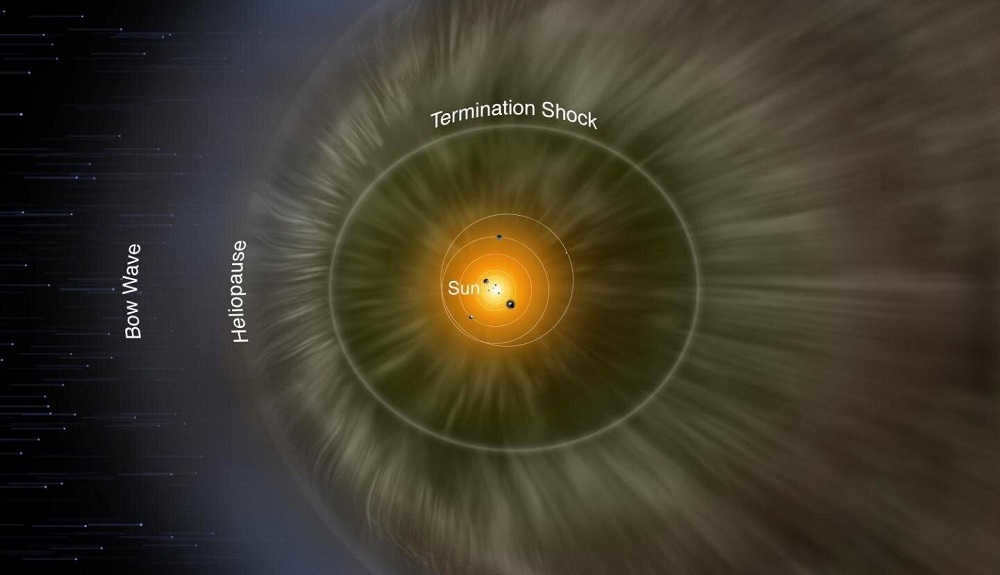
The heliopause is widely accepted as the point where the solar system comes to an end. If we define the boundary of the solar system as the heliopause, the distance from the Sun to the heliopause is approximately 18 billion kilometers on average.
However, there is a drawback to this definition as the heliopause is constantly changing. The amount of radiation emitted by the Sun is not consistent, and the movement of the Sun through the Milky Way also impacts the size of the heliopause.
If we consider the heliopause as the outer limit of the solar system, it can be argued that humanity has successfully sent two spacecraft, Voyager 1 and Voyager 2, into the realm of interstellar space.
Just to provide some context: The Sun occupies a minuscule fraction of 0.00001% (10 -5%) of the total volume of a sphere with a radius equivalent to the size of the Earth’s orbit. In comparison, the Earth occupies a volume that is about one millionth (10 -6 ) the size of the Sun’s volume.
Oort Cloud
Another way to define the boundary of the Solar System is by looking at the outermost region known as the Oort cloud. The Oort cloud consists of a collection of comets and various objects, mostly composed of icy planetesimals, that encircle the entire solar system.
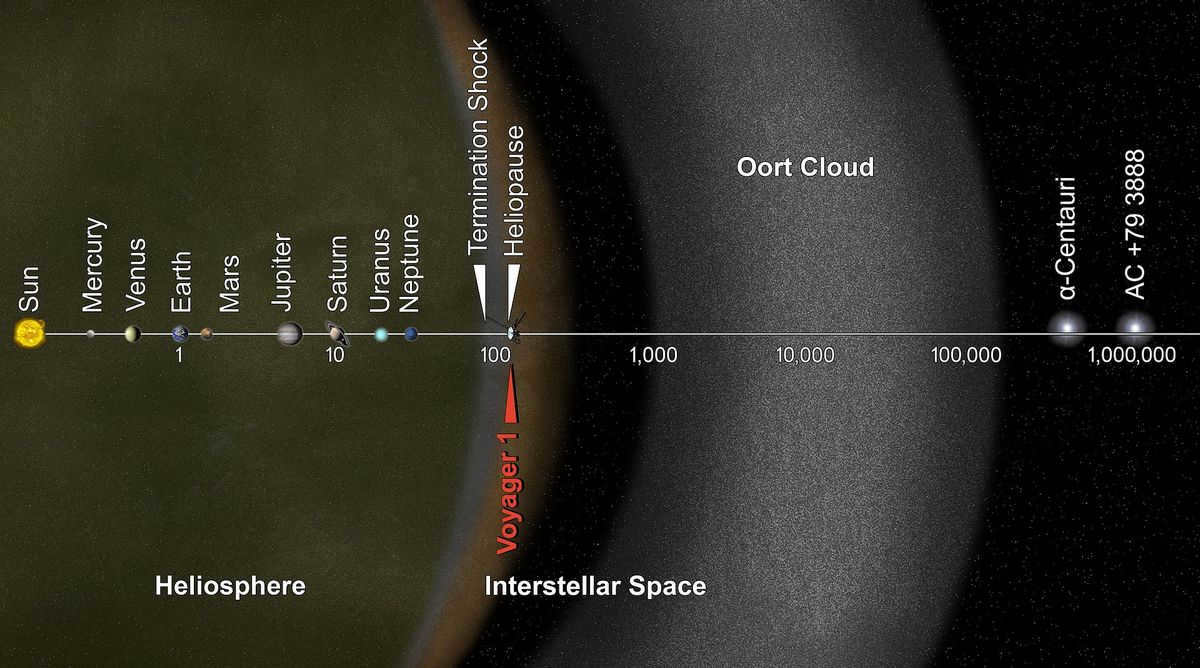
The Oort Cloud, located at the outermost reaches of our solar system, spans a distance ranging from 2,000 to 100,000 astronomical units (equivalent to 1.87 light years) from the Sun. As an integral part of the Solar System, the Oort Cloud is often defined as its outermost boundary.
Nevertheless, this particular definition poses certain challenges. Foremost, astronomers face difficulties in precisely determining the actual size of the Oort Cloud.
Given our position inside the Oort Cloud, pinpointing its exact beginning and end proves to be an exceedingly complex task.
Furthermore, the outermost regions of the Oort Cloud may contain a higher proportion of material originating from interstellar space rather than from our own solar system, which raises questions regarding its classification as part of our solar system.
The Oort cloud region has not yet been explored by space probes. Voyager 1, which is the fastest and farthest interplanetary space probe currently leaving the solar system, is expected to reach the Oort cloud in approximately 300 years. It will then take around 30,000 years to pass through this region. However, by the year 2025, the radioisotope thermoelectric generators on Voyager 1 will no longer have enough power to operate its scientific instruments, thereby preventing any further exploration by Voyager 1. The other four probes currently exiting the solar system are either no longer functioning or are predicted to become inoperable once they reach the Oort cloud.
The Sun’s gravitational pull
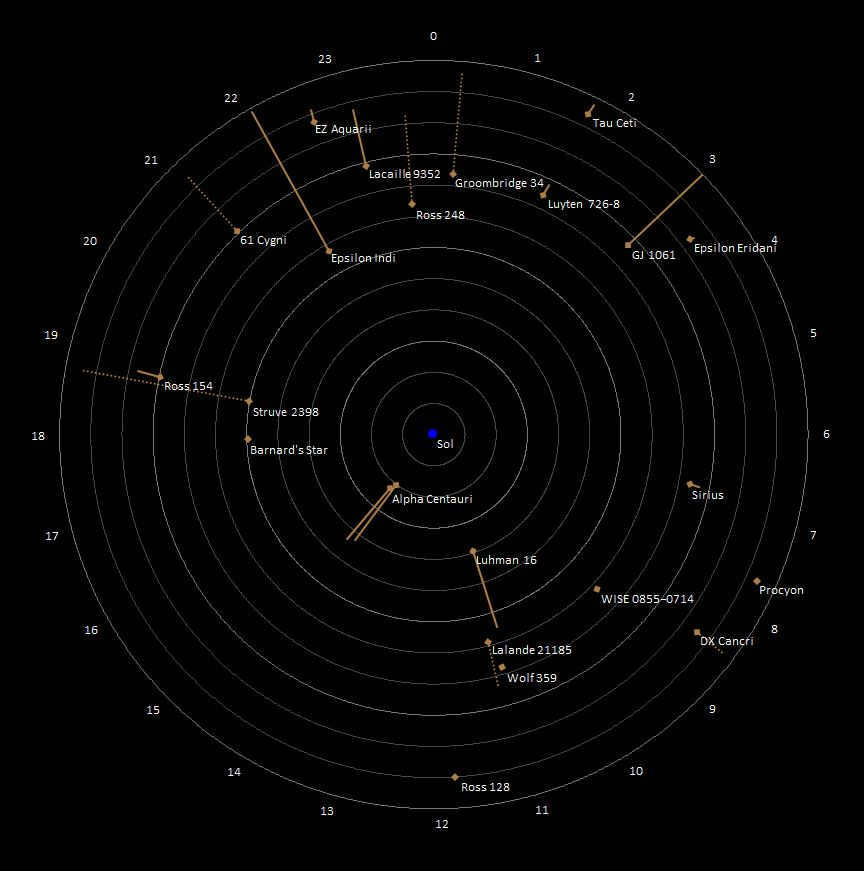
The third definition refers to the gravitational impact of the Sun, suggesting that the solar system’s boundaries lie where the Sun’s gravitational force becomes insufficient to maintain objects in orbit.
While the exact distance at which an object can still orbit the Sun remains unknown, estimates range from slightly less than one light-year to well over one light-year, and even as far as two light-years (equivalent to 125,000 astronomical units).
By this definition, the solar system is undeniably massive. A single light-year measures 9.46 trillion kilometers, indicating that the Solar System would span trillions of kilometers according to this criterion.
The size of the solar system varies depending on the definition employed, ranging from 18 billion kilometers to over 10 trillion kilometers.
The vastness of cosmic bodies and the immense distances between them offer little comprehension as they cannot be observed from an external perspective and there are no earthly objects to serve as a point of comparison. This leaves us to imagine and speculate. To aid in our understanding, scale models have been created to provide visual representations.
However, what if we were to construct a scale model of the solar system that accurately reflects the true proportions? This model would simplify certain aspects: the planets’ orbits would be depicted as perfect circles, the average distance from the Sun to each planet would be considered, and the planets themselves would be represented in a spherical form.
Imagine this model being housed within an ordinary object, such as a bus, with the orbit of Pluto extending from the front to the back bumper. The diameter of the solar system would be represented by this distance.
In this particular model, the distance to the nearest star would be approximately 38.5 km, and it would take light 4.22 years to travel that distance.

If we were to imagine a hydrogen atom as a ball, it would be approximately the size of a soccer ball compared to the actual size of celestial bodies.

The solar system is comprised of various celestial bodies, but the Sun is by far the most massive, accounting for 99.866% of the system’s total mass. Its gravitational pull is what keeps all the other objects in the solar system in orbit.
Using a scale model, we can visualize the real size of the Sun in comparison to other objects. In this model, the diameter of the Sun would be equivalent to 1.3 mm, roughly the same size as a pink medical needle.
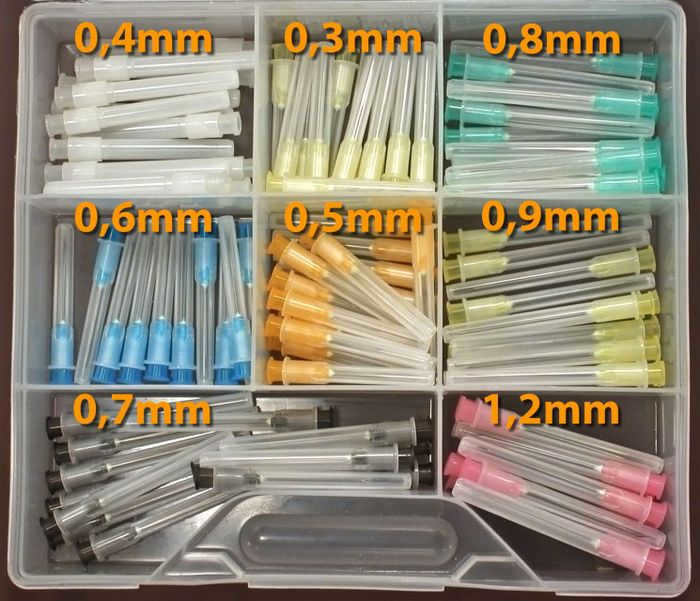
The diameter of the planet closest to the Sun measures approximately 0.005mm (5µm), equivalent to the size of a red blood cell (7µm).
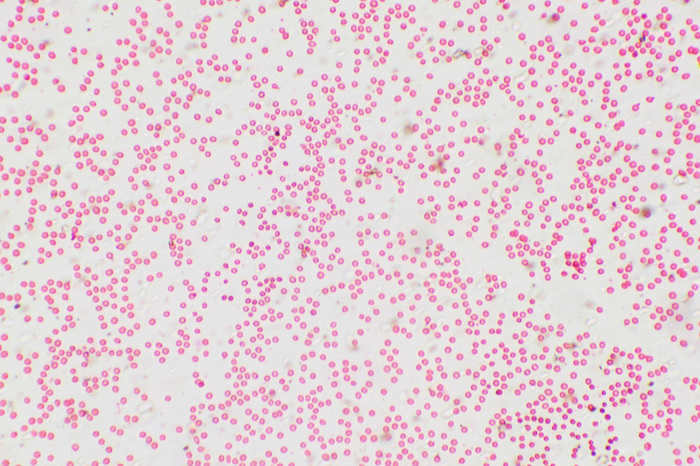
In the simulation, the distance between the Sun and Mercury will be 5.6cm.
Venus will have a size of 0.01mm in the model, which is roughly equivalent to the thickness of animal fur.

Venus will be positioned 104mm away from the Sun.
If we were to compare the Earth’s diameter to that of Venus, it would be approximately the same, measuring 0.01mm. At this minuscule size, the difference would be completely imperceptible to the naked eye.
It’s mind-boggling to think that our entire existence is confined to this tiny speck, where 9 billion people call home.
In this scaled-down model of the solar system, the distance to the Sun would be equivalent to 14.4cm.
– The Sun’s diameter, at this scale, would be a mere 0.003mm.
– The distance between the Earth and the Moon would be represented by a mere 0.4mm, similar to the diameter of the thinnest medical needle.
Mercury, on the other hand, would be slightly larger, measuring 0.006mm (6μm), compared to Venus’ 0.005mm (5μm).
Mercury would be positioned 22cm away from the Sun in this scaled model.
The combined orbits of the planets in our solar system that are closest to the Sun could easily fit on a single bus seat. Additionally, the combined mass of these planets is a mere 0.001% of the overall mass of the entire solar system.

It’s time to take a look at the gas giants.
If the largest planet in the solar system were scaled down, it would have a diameter of 0.14mm, which is equivalent to the diameter of an average fishing line.

The distance of this object from the Sun measures 75.1cm, which is already quite significant, comparable to the length of a bolt cutter, for instance.

If we were to scale down the solar system, the planet itself would be about the size of a grain of sand, measuring only 0.11mm in diameter. And if we included the rings, the diameter would increase to 0.24mm, making it similar in size to Jupiter.
To put it into perspective, the distance from the Sun to Saturn would be approximately 1.37 meters, which is about the height of actor Peter Dinklage.

If we were to scale down the solar system, it would be as tiny as the thickness of a human hair, measuring only 0.05mm.

The distance from the Earth to the Sun would be approximately 2.77m, which is slightly greater than the height of the world’s tallest man, Robert Pershing Wadlow (272cm).

Its dimensions are equivalent to Uranus, measuring 0.05mm.
Furthermore, it is positioned 4.3 meters away from the center. To put this into perspective, the length of a Toyota Land Cruiser 200 is 4.9 meters.

Here is the final planet in the solar system.
It has the same dimensions as the Moon, measuring 0.002mm (2μm) compared to 0.003mm (3μm).
It can be found on the back of a bus.
Wow, look at that! @moderator, @admin, @Loony, please come here quickly. Can’t you see that this man is in trouble? Oh dear, he is the only one seeking help, drop everything and solve his problem. It’s been 3 hours and you haven’t said a word, you’re really getting on this man’s nerves. You’re useless, just like Stalin!
@admin, could you please answer? Why did everything turn out like this and what should be done? No one is responding, so what’s the point of having support and Loony here?
Hey, @moderator, any idea why my post isn’t appearing in the feed?

The ANGARA 5 rocket has been successfully launched
The scale model of the rocket has been created in 1:350 scale.
We have utilized 3D printing technology to create the rocket and the launch table.
The model is beautifully displayed on a wooden base and is protected by a cover.
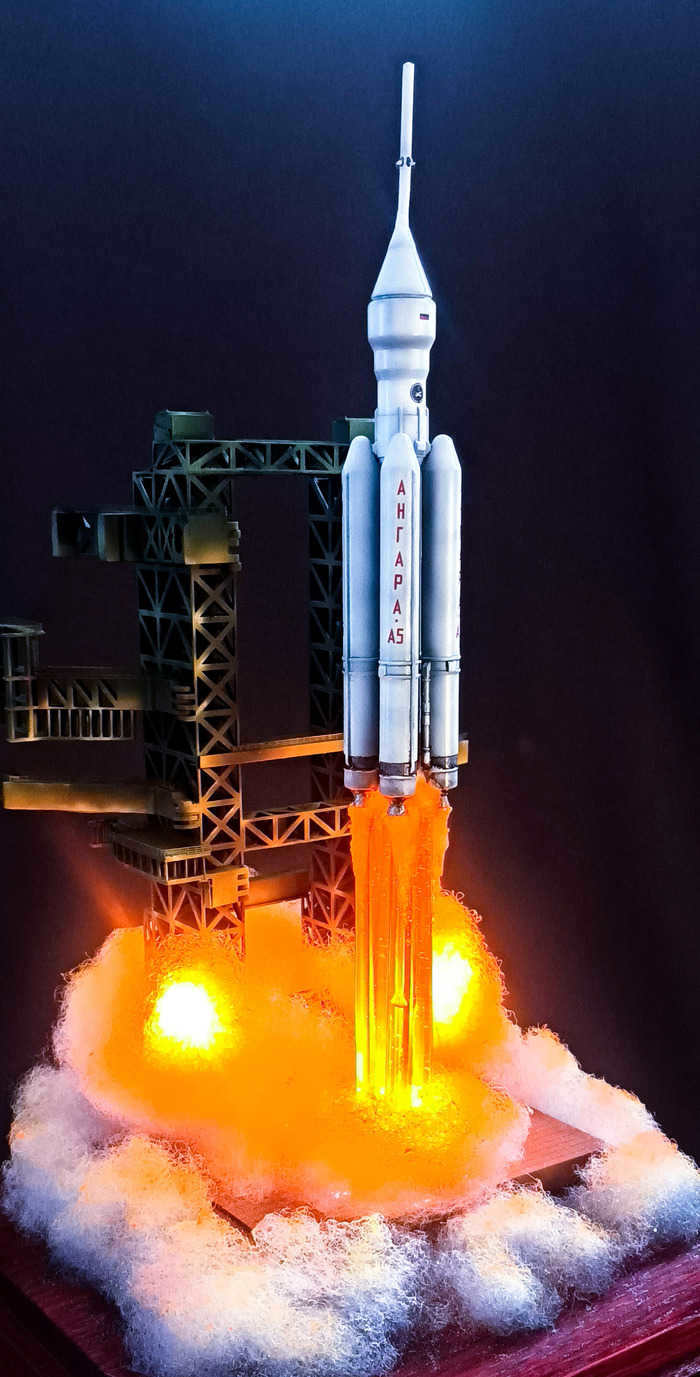
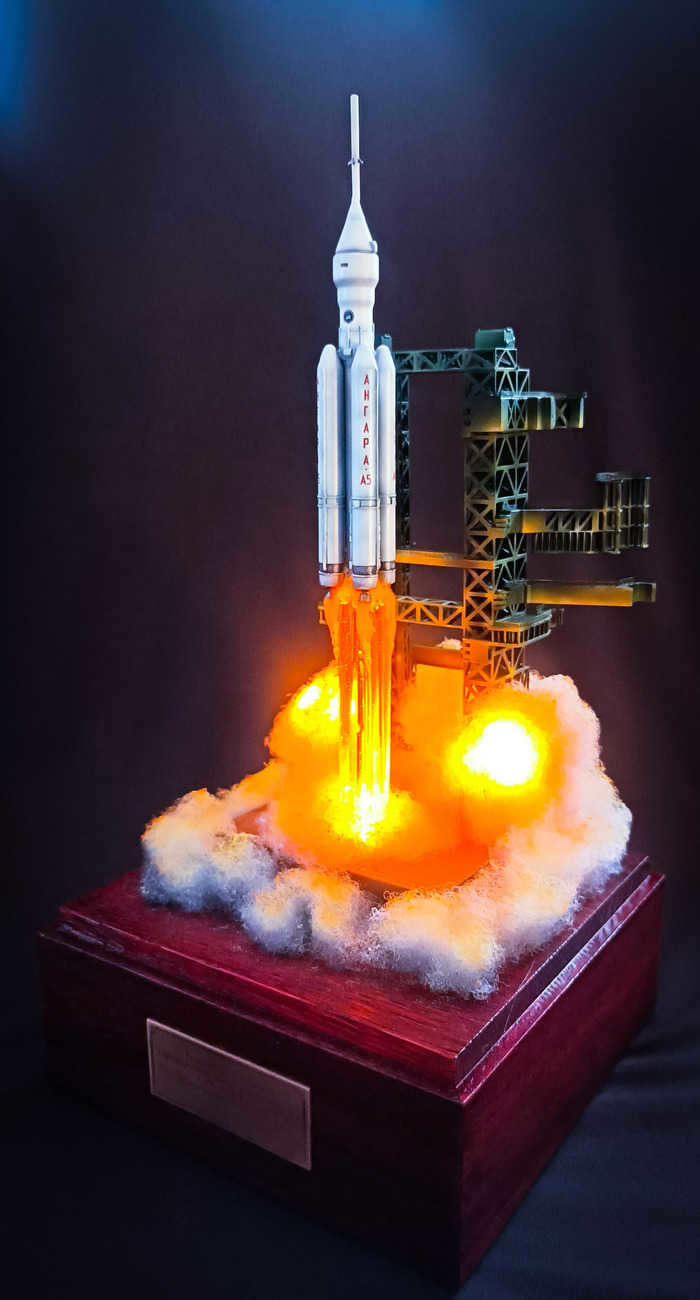
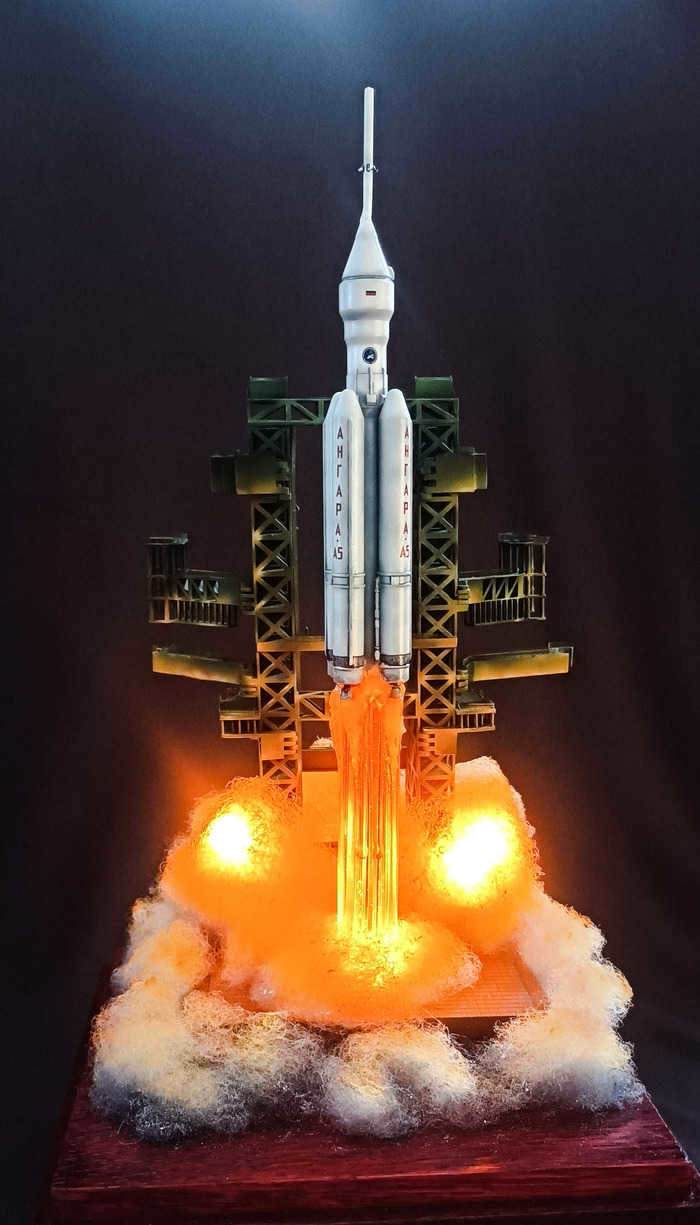

Spacecraft Development: Alexander Likhachev, a Modeler, Presents His Vision for Passenger Space Travel on the “Buran” “Aeroflot” Spaceplane


Prior to the anniversary of the flight (November 15, 1988), two stunning models of the Soviet spaceplane “Buran” were sent. One was in its standard assembly and painting, while the other had some small additions. These models were created by Alexander Likhachev.
The second model was presented as a tourist “Buran” for international visitors. Its affiliation with civil aviation (“Aeroflot”) and the logo of the tour company “Intourist” indicate this.
PS: This is not an advertisement, but rather a suggestion. However, very few individuals would be inclined to invest numerous hours in painting a Buran, so it is definitely not an advertisement.

Space Shuttle Discovery
Greetings, everyone! This review is unexpected and arose from the unplanned assembly of a toy spaceship kit. Surprisingly, the assembler is actually over 30 years old. Yes, it may be surprising, but sometimes even adults struggle to follow the instructions and complete a model!
We decided to take on the challenge and assemble the toy as an exhibition piece, to prove that it is not as difficult as it seems.
My son took charge of the assembly process, as usual. He quickly identified mistakes made during the initial assembly by the buyer, which resulted in the breakage of a component (a spring-loaded piston-shock absorber that should not be moved back and forth until it is securely fixed in the frame structure).
Allow me to introduce you to the remarkable NASA Space Shuttle “Discovery” by Lion King, also known as Lepin.
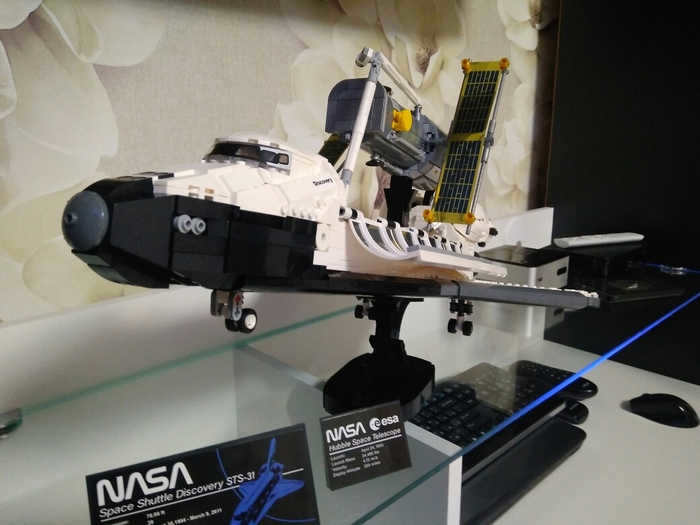

I believe discussing the quality is pointless as it is top-notch. Let me share a few words about how fascinating the model turned out to be. By turning one of the engines for the nozzle, the shuttle moves its ailerons. Additionally, you can fold and extend all three landing gear (although there was a mishap due to an incorrect assembly of the front landing gear).
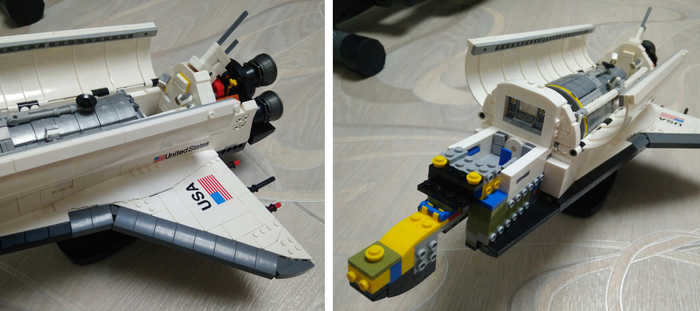
The space shuttle is equipped with an internal telescope that can be left inside or unfolded into a “working state”. In this state, it provides solar panels and can be set on a stand. Additionally, it is possible to simulate the moment of withdrawal of the telescope from the cargo compartment of the ship!
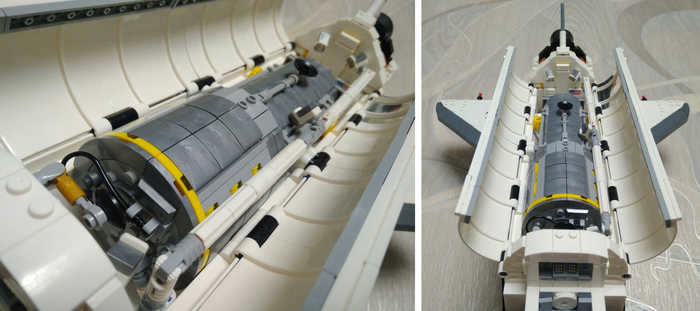

It resembles Hubble in some ways, maybe not, I’ll let you be the judge of that.
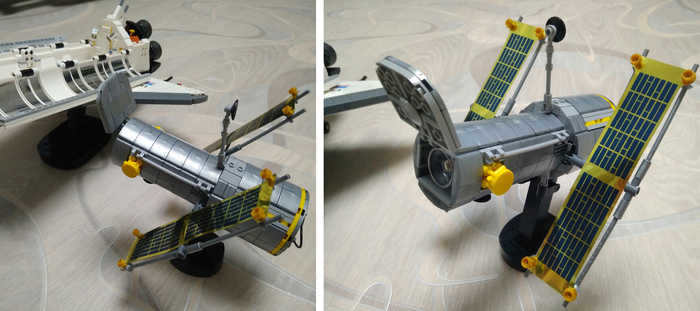

The spacecraft’s cockpit features a foldable capsule containing seats for astronauts.
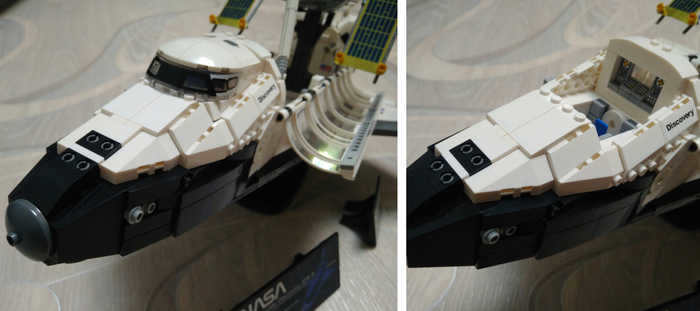

You have the option to place the model on a chassis or mount it on a stand, similar to the actual space telescope!
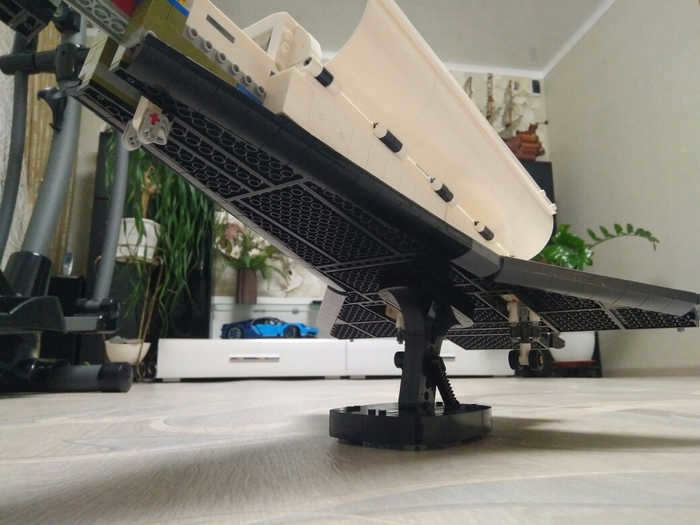
Overall, the assembly process was quite fascinating, and the finished model is incredibly lifelike. It features numerous moving components and boasts an impressive size!
Here are a few snapshots showcasing the completed model.
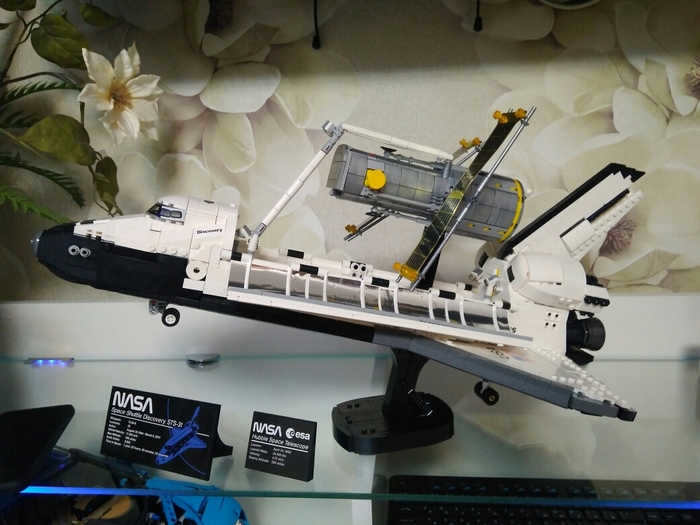

The engine nozzles of this model are incredibly realistic and if you rotate the upper one, you will see the wing’s ailerons rise and fall.


Good health, wellness, physical activity, leave comments, get in touch via email, and I will respond to inquiries.
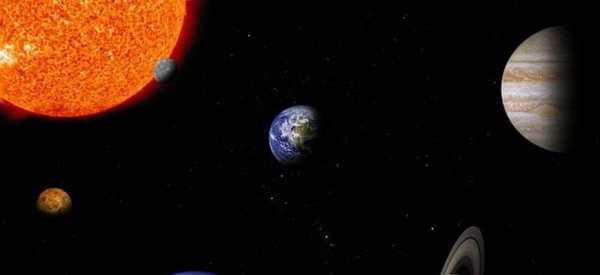
The Solar System is a structured model governed by the laws of physics and mathematics. Despite its seemingly chaotic appearance, all objects within the system have specific sizes, characteristics, positions, orbits, and trajectories. Understanding the dimensions of the Solar System is a topic of great importance, and it will be explored further.
Physical attributes
In the vast expanse of the cosmos, there exists an immense multitude of stars, making it unsurprising that our solar system is not unique. Just 150-200 years ago, humanity possessed only a limited understanding of outer space, often constrained by the capabilities of telescopic instruments. However, at the dawn of the 20th century, the situation underwent a significant transformation. Scientists were able to acquire knowledge concerning the formation of the universe, the mechanisms responsible for the birth of stars and planets, and the phenomena that sparked the genesis of our very own solar system.
Consequently, every celestial entity possessed its own unique form and occupied a specific location. Certain entities transformed into satellites, while others evolved into autonomous entities, and some ceased to exist altogether. This entire process transpired over the course of approximately 4.5 billion years. In terms of the dimensions of the solar system, it is noteworthy to mention that its total mass is equivalent to 1.0014 units, with 99.8% of this weight attributed to the Sun. Merely 0.2% of the mass is distributed among other entities, including planetary objects, satellite components, asteroids, and space debris.
The focal point of the SS is our primary celestial body, the Sun. It is closely associated with the roster of 100 billion stars that inhabit the vast expanse of the Milky Way galaxy. It falls into the category of medium-sized stars and is classified as a G2V spectral type (“Yellow Dwarfs”). The diameter of the solar system, more specifically the star itself, measures 1,392,000 kilometers. It is presently situated in the midst of its lifespan. The remarkable mass enables the star to accommodate eight planets, with each planet having its own distinct system.
Boundary Regions of the Solar System
The region known as the Kuiper belt and the Oort cloud serve as the outermost boundaries of our star. Although these regions are located at a significant distance, the Sun’s influence extends throughout. They are home to a vast number of other celestial objects that have an impact on the solar system.
- The Oort cloud is a spherical region surrounding the solar system, located approximately 2 light years away from the star. It serves as the birthplace of comets, which then travel closer to the planets.
- The Kuiper Belt consists of residual material that was involved in the formation of the solar system. It primarily consists of small ice particles from outer space, along with clouds of ammonia and methane.
Between these regions and the outermost regions of deep space, there lies an extremely rarefied area. This area is primarily composed of gaseous and icy remnants.
Measurement of the Solar System’s Radius and Diameter
When determining the radius and diameter of the solar system, it is dependent on the specific object that the researcher is focusing on. This is because the measurements can be based on the farthest orbit of a planet or the most distant object.
If we consider the planets, it is important to consider the orbital path of Neptune. In this case, the radius is approximately 4.545 billion kilometers, while the diameter is twice that size at 9.09 billion km. However, if we include Erida as a planet, these measurements will change.
Scientists have identified Sednaya as the farthest celestial object from Earth, surpassing even Pluto. It is located at a distance of 143.73 billion kilometers from our planet, making its diameter a staggering 287.46 billion kilometers. This discovery challenges the notion that the diameter of the solar system remains constant.
One way to determine the size is by examining the heliosphere, a bubble formed by the collision of solar wind with interstellar medium. The boundary where the wind ceases is known as the heliopause. This event occurs at a distance of 90 astronomical units (a.u.) and has a diameter of 180 a.u.
The calculation of the solar system’s diameter depends on the reference point, whether it’s a celestial body or a formation. It could be the farthest planetary orbit or the most distant object imaginable.
If we consider the solar planets, we can look at the orbit of Neptune. In this case, the radius would be 4.545 billion kilometers, resulting in a solar system diameter of 9.09 billion kilometers. This number may change if Erid becomes classified as a planet.

The heliopause serves as the ultimate frontier of our solar system.
Sedna, the most remote celestial body, is positioned three times further from us than Pluto. This vast distance measures 143.73 billion kilometers, forming a diameter of 287.46 billion kilometers.
There is an alternate perspective on the heliosphere. It is envisioned as a bubble where the solar wind encounters the interstellar medium, reaching the boundary where solar gravity still holds sway. This boundary is known as the heliopause and lies at a distance of 90 a.u. (1 a.u. = 150 million kilometers), resulting in a solar system diameter of 180 a.u.
Dimensions of the Solar System
Upon initial inspection, it might appear that the immense realm of the cosmos is arranged in disordered formations. However, it is actually a well-organized model that adheres to the same laws of physics and mathematics as our planet. Every celestial body possesses its own unique dimensions, characteristics, positions, orbits, and paths of movement. The matter of determining the precise measurements of the solar system is of utmost importance. The subsequent section will delve into this inquiry.
Physical attributes
There is an immense number of stars in the vast universe, so it is not surprising that our solar system is not the only one. Just a century and a half ago, humans had limited knowledge and erroneous beliefs about outer space. Their understanding of the size of the Solar System was often constrained by the capabilities of telescopes. However, the situation changed dramatically at the beginning of the 20th century. Scientists were able to gather information about the origins of the universe, the processes that led to the formation of stars and planets, and the phenomena that sparked the creation of our solar system.
Model Description
Our solar system revolves around the Sun, which is a natural luminary. The Sun is part of the Milky Way galaxy, which houses a staggering 100 billion stars. It falls under the category of medium-sized stars and is classified as a G2V star, commonly known as a “Yellow Dwarf”. The Sun has a diameter of 1,392,000 kilometers, making it the largest object in our solar system. It is currently in the middle of its life cycle. Its immense mass enables it to hold eight planets, each with its own unique system.
Limitations of the solar system
The Kuiper belt and the Oort cloud serve as the boundary regions of our star. These regions are located at a significant distance, but the Sun’s influence on them is extensive. They contain numerous celestial objects that impact the solar system.
- The Oort cloud is a spherical region surrounding the solar system. It is located at a distance of approximately 2 light years from the star. This is where comets are formed, which later travel close to the planets.
- The Kuiper Belt consists of leftover material from the formation of the solar system. It is primarily composed of small icy particles from space, as well as clouds of ammonia and methane.
There is a region between these areas and the outer reaches of deep space that is extremely thin. It consists mainly of gas and icy remnants.
Size and Shape
When determining the size and shape of the solar system, it depends on which object the researcher is focusing on. The measurements can be based on the farthest orbit of a planet or the most distant object possible.
If we consider the planets, it is important to look at the orbit of Neptune. In this case, the radius would be 4.545 billion kilometers and the diameter would be twice that – 9.09 billion kilometers. If Erida is included in the list of planets, these measurements would change.
According to scientists, Sednaya is regarded as the furthest celestial object. It is positioned at a distance three times greater than that of Pluto from Earth. This equates to a staggering 143.73 billion kilometers, resulting in a diameter of 287.46 billion kilometers. Hence, it can be concluded that the size of the solar system varies.
A different method of determining the magnitude is by examining the heliosphere. The heliosphere is a bubble-like structure where the solar wind interacts with the interstellar medium. The boundary where the solar wind ceases is known as the heliopause. This event takes place at a distance of 90 astronomical units with a diameter of 180 astronomical units, respectively.
How large is the solar system in terms of diameter?
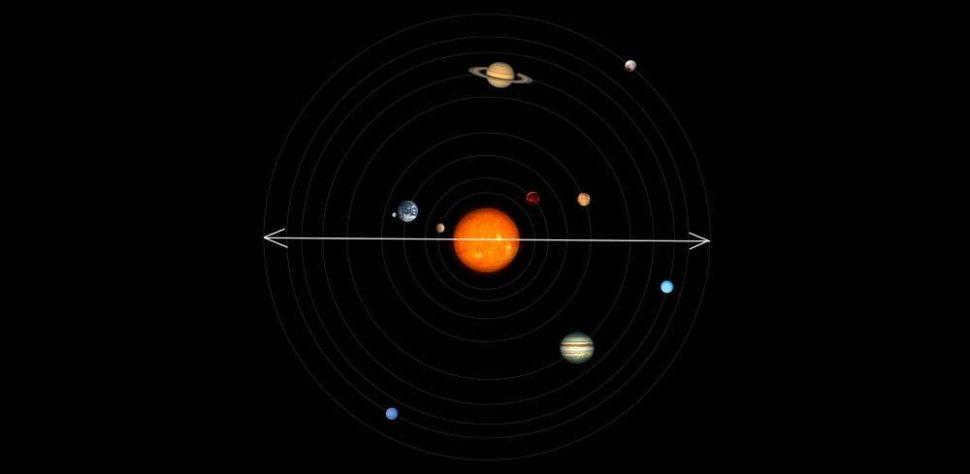
It is quite curious that scientists are unable to provide a precise response to the inquiry regarding the dimensions of the solar system. The reason behind this lies in the ambiguity surrounding the definition of the solar system’s boundary.
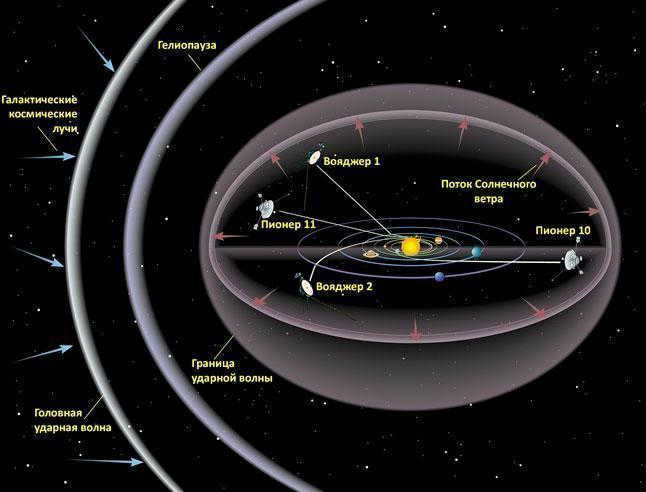
Classical scheme of the heliosphere
On the contrary, in terms of definition, the Solar System encompasses all celestial bodies that orbit around the Sun, and some of these bodies have orbits that extend beyond the heliopause. The existence of the Oort cloud, a massive collection of comets and asteroids encircling our star, is widely accepted. Although this cloud has yet to be directly observed, it is believed to be located at a distance of 50,000-100,000 astronomical units from the Sun, which is equivalent to a staggering 7.5-15 trillion kilometers! This distance of 15 trillion kilometers can be considered as the radius of the Solar System. Furthermore, its diameter is twice as vast, measuring 30 trillion kilometers.
References:
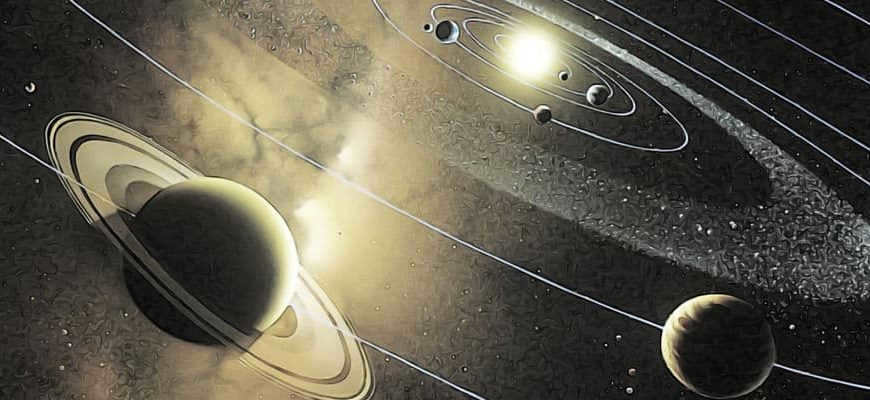
Let’s be honest with each other and acknowledge that very few of us have a true understanding of the vast distances within the cosmos. It’s a complex concept that is difficult for our human brains to fully grasp. Take, for example, the solar system. Can you picture it in your mind? I’m willing to bet that most of us imagine a simple model with the Sun as a soccer ball in the center, surrounded by smaller spinning balls of varying sizes. It’s a convenient visualization, but it’s completely inaccurate.
Today, let’s correct this misconception and construct a more accurate mental model of our planetary system. Are you ready?
A generic representation of Earth
Many households possess a representation of Earth, commonly referred to as a globe. These objects vary in dimensions, but a typical one is usually 30 centimeters in diameter. To put it into perspective, this is approximately the same length as an A4 sheet of paper. This particular size corresponds to a scale of 1:42 520,000. In simpler terms, each millimeter on the globe represents a distance of 42.52 kilometers on the actual surface of our planet. This measurement is slightly greater than the distance of a marathon or a leisurely bike ride on a Sunday afternoon. It is a path that one can personally explore. In essence, it is not much more than that.
The International Space Station ISS will revolve around this representation of Earth at an extremely low elevation. At a proximity of approximately 1 centimeter from the surface of the world. Similar to numerous other satellites in low Earth orbit. The geostationary satellites, situated at an altitude of 35,800 km, will circle the representation Earth at a distance of nearly precisely 1 m from its core (42,200 km).
However, how enormous will the Moon be at this proportion? And how far away will it be? The diameter of the Moon in our modeling will be 8.2 cm. In other words, it will be the magnitude of an apple or an orange. This orange-sized Moon will revolve around the globe-sized Earth at a distance of approximately 10 meters.
In our hypothetical scenario, we can imagine the Sun being positioned at a distance of 3.5 kilometers away. This particular distance is commonly referred to as an “astronomical unit”, or A.E. Interestingly, it would take approximately 8 minutes and 20 seconds for a beam of light to cover this distance. However, if we were to consider an airliner traveling at a speed of 900 km/h, it would hypothetically take nearly 19 years to cover the same distance!
Unattractive Planet
Considering that the Sun and Moon seem to be of similar size in the sky, but the Sun is roughly 400 times further away, it can be inferred that the Sun is approximately 400 times larger than the Moon. This means that the Sun has a diameter of about 32.7 meters, which is equivalent to the size of a Ferris wheel or a nine-story high-rise. In comparison, the Sun is 109 times larger than the Earth in diameter, making our planet appear insignificant when compared to the colossal Sun. In reality, the Earth is even smaller than most sunspots.
Just envision a massive Ferris wheel, gracefully rotating in the park to the delight of residents and visitors of the capital city. And just 3.5 kilometers away from this immense structure, which is equivalent to 7 city blocks, lies our Earth in a dimly lit basement, like an unwanted soccer ball. This is the state of our planet.
Earth is one of the inner planets in our solar system, joining Mercury, Venus, and Mars. All of these planets are located within a maximum distance of 5.8 km from our scaled-down Sun (if we imagine Mars to be the size of a small melon, about 16 cm).
For reference, Jupiter would appear as a bright object about five astronomical units away from the Sun. That means it would be five times farther from the Sun compared to Earth, or approximately 17.5 kilometers in our model. Saturn, on the other hand, would be around 35 km (equivalent to 10 a.u.) away, and Neptune would be even farther at a distance of 100 km (about 30 a.u.) from our Ferris wheel-like representation of the Sun. In Neptune’s vicinity, it would appear as an intensely luminous spot, shining 300 times brighter than the full Moon.





